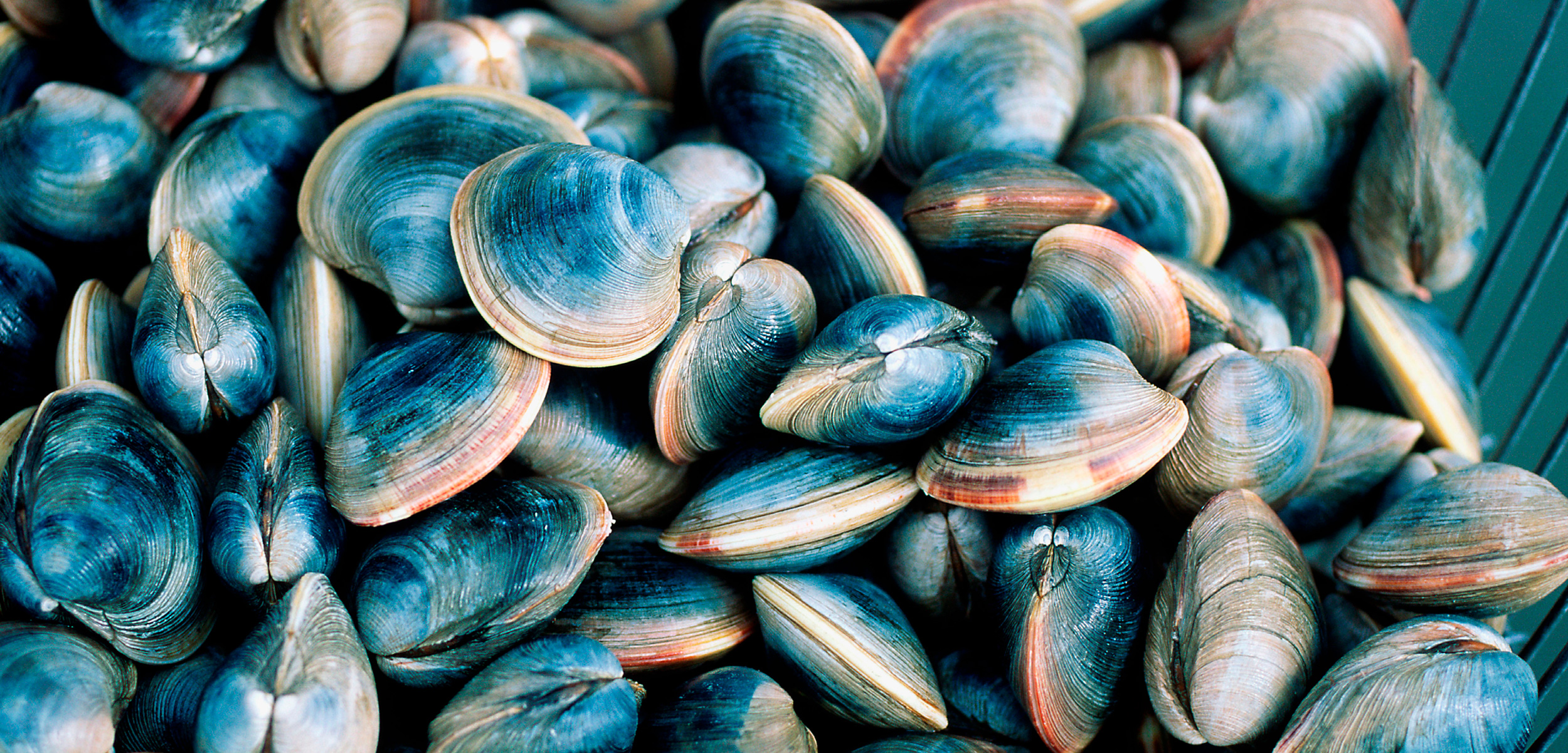Farmed Shellfish Is Not Immune to Climate Change
Touted as a sustainable source of protein, shellfish aquaculture may reach a tipping point by 2060.
Article body copy
Over three billion people depend on marine animals for protein. With wild fisheries stretched thin, that need is increasingly being met by aquaculture. Though some farmed seafood products tax the environment, cultivated mollusks—especially clams, mussels, oysters, and scallops—can help feed a growing population without taking a heavy environmental toll, says Thomas Wilding, a benthic ecologist at the Scottish Association for Marine Science.
Unlike fish, mollusks don’t require feeding, says Wilding. Instead, the filter feeders siphon plankton straight out of seawater. Mollusks also improve water quality and reduce excess nutrients that can cause harmful algal blooms and hypoxic dead zones.
But a changing climate adds complexity to this straightforward system. Excess carbon dioxide makes seawater more acidic, making it difficult for mollusks to create their hard shells—especially in shallow waters where shellfish aquaculture is most common. Warmer water alters patterns of plankton growth—enabling it in some areas, impeding it in others—which may also jeopardize mollusk production.
According to a new study coauthored by Wilding, the compounded effects of climate change and ocean acidification could majorly disrupt global shellfish aquaculture in just a few decades.
To predict how different countries’ aquaculture industries will fare by 2100, Wilding and his colleagues created a model that assessed the effects of “business as usual” greenhouse gas emissions on mollusk production. They scored each nation by how much its marine environment is expected to change, how sensitive its aquaculture operations are to these fluctuations, and the government’s ability to manage its aquaculture industry.
They found that climate change will cause big problems for shellfish aquaculture globally, with the greatest declines in productivity starting around 2060. In North Korea, however, the aquaculture sector could reach one of these tipping points as early as this year.
Not all nations will be affected equally, according to the study. Warming oceans and increases in extreme weather are expected to be the biggest problems facing Asian nations, which together produce over 98 percent of the world’s farmed mollusks. In contrast, ocean acidification threatens aquaculture operations in Georgia, Tunisia, and Turkey. And European nations’ reliance on a few prized mollusk species could make it harder for their industries to survive changing oceanographic conditions.
Developing and least developed nations with weak governance and nations that are more dependent on shellfish as a source of protein will be particularly hard hit, says Wilding.
Fortunately, says Wilding, there is still time to adapt: “Forewarned is forearmed for these nations.” Mitigation measures, such as breeding hardier species and potentially moving farms offshore to cooler, deeper water should be explored on a case-by-case basis, he says.
However, these interventions may be out of reach for developing countries with weak governance, says Halley E. Froehlich, an aquaculture scientist at the University of California, Santa Barbara, who was not involved in the study. “Governance is such a major driver of how a system can be resilient over time,” she says.
With the world’s population expected to reach 11 billion by 2100, mollusks could be key to feeding everyone in a sustainable way. However, says Wilding, “we can only do that if the environment will sustain that increased production.”

